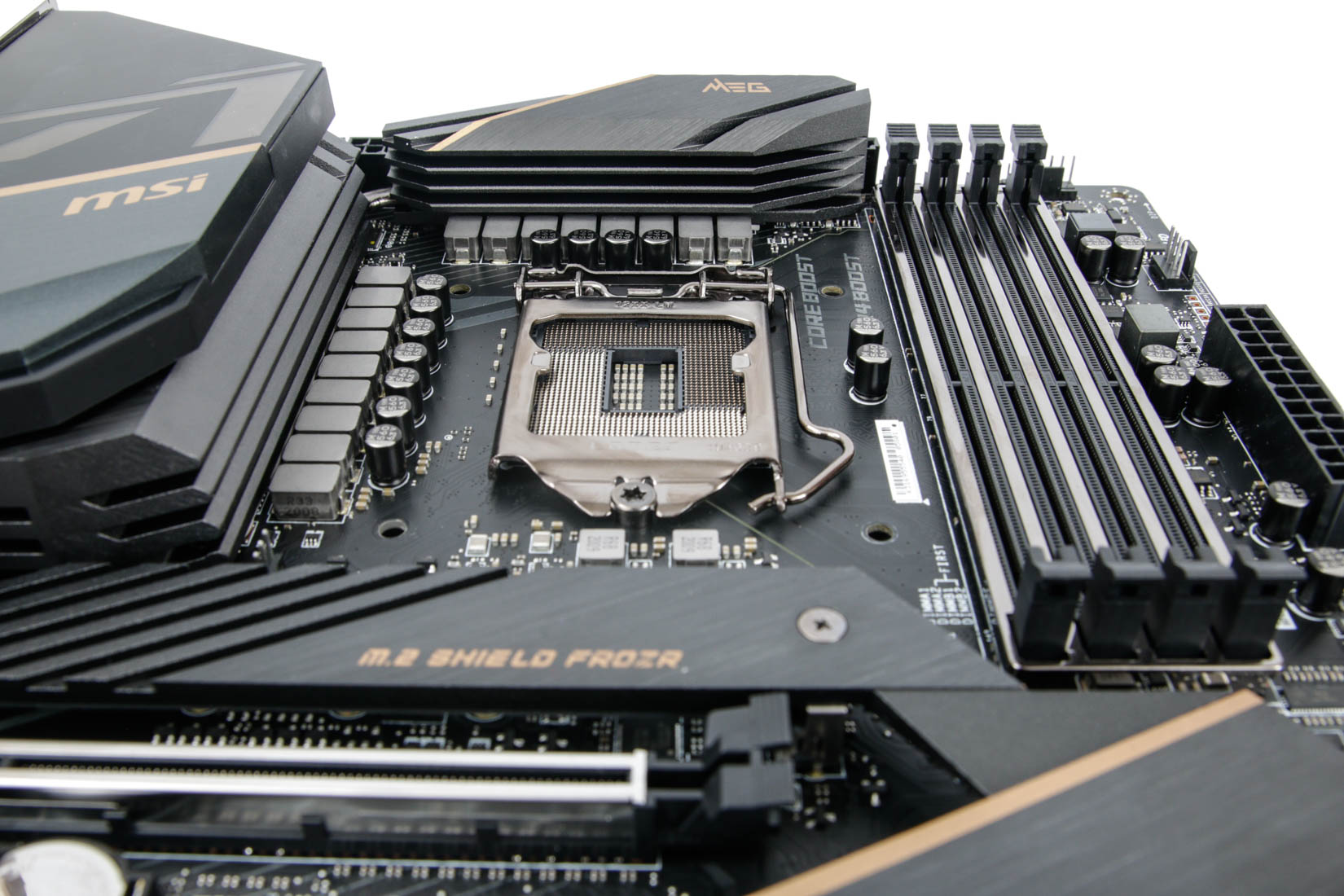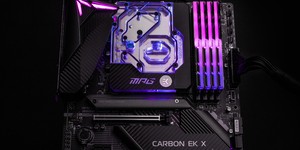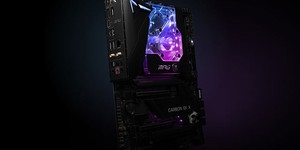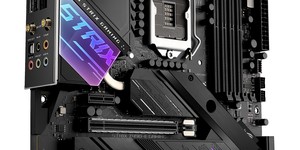Performance analysis
First and foremost, EFI versions have differed in terms of boosting and other various issues, but things still remain a little flaky as far as getting the Core i9-10900K up to its rated 5.3GHz turbo speed. In fact, motherboard manufacturers have said that even having CPU-Z or motherboard software running in the background can prevent the CPU boosting properly - clearly not ideal from an enthusiast's point of view. Where possible, we will use the latest EFI versions, but as we weren't able to test all motherboards on the same day, there may be improvements in performance as time goes on, especially with regards to lightly-threaded performance. For the MEG Z490 Ace, we used BIOS version 1.16.
Compared to the initial 1.10 BIOS we used, boosting did seem to happen as it should more regularly, topping out at a single-threaded Cinebench score of 539, whereas with the older version we were lucky to see more than 530. Overclocking, though, saw us hit the limit at 5.1GHz, which required 1.3V, but no amount of extra voltage saw 5.2GHz stable in Blender, even at 1.38V, where things were extremely toasty. However, that 5.1GHz mark means you lose 200MHz of two-core boost, which saw the Cinebench score fall to 523.

The same overclock added more than 100 points to the multi-threaded score, though, rising from 6,325 to 6,451 and cut the Blender benchmark time from 123 seconds to 118 seconds, thanks to the all-core frequency sitting at 5.1GHz instead of 4.9GHz. Gains were also seen in Far Cry New Dawn, where the 99th percentile minimum frame rate hit 111fps with the overclock compared to 98fps without. However, Time Spy appeared to prefer that stock speed boost as the overclocked result was a little slower - a lot like what we see with AMD CPUs where manual overclocks result in lower scores thanks to the higher boost frequency being disabled.

Audio performance was excellent, with noise and dynamic range levels of -114.5dBA and 114.6dBA, respectively - some of the best results we've seen from a Realtek ALC 1220 implementation. We don't have any other boards to compare against yet, though, but the M.2 speeds appeared to be on the money, too, with read and write results of 3,355MB/sec and 1,878MB/sec, respectively. M.2 temperatures sat at 49°C under load using the lower heatsink, rising to 59°C without it, so it's definitely worth using the heatsink for cooling reasons as well as aesthetic. Finally, power consumption hit a hefty 300W under load at stock speed for the system, with the overclock adding another 49W on top.
Conclusion
The core of the MEG Z490 Ace is solid and the board is more than up to the task of handling overclocks with Intel's new 10-core CPU. VRM cooling is excellent, with room to spare courtesy of its cooling fan and you get three M.2 ports that are very effectively cooled plus a decent array of overclocking and testing tools. However, at this price we'd like to have seen more rear USB ports and also thermal probe headers that are tied to fan control.
A more pressing issue is its software, which seemed to apply a 5GHz overclock, overriding whatever we put into the EFI. We're seeing teething issues with other boards, though, and as software is such a tiny part of a motherboard that many don't use anyway, we don't think it's fair to say this is a deal-breaker. For now, we'd avoid it and as we've mentioned, we're waiting on a reply from MSI on the issue. Other than this, we consider the MEG Z490 Ace to be an excellent board for hosting a Core i9-10900K, but ultimately, at this price, it's well within premium territory and we'd suggest waiting to see how cheaper boards fare, especially if you'll be pairing one with a less power-hungry 10th Gen CPU.


MSI MPG Velox 100R Chassis Review
October 14 2021 | 15:04









Want to comment? Please log in.